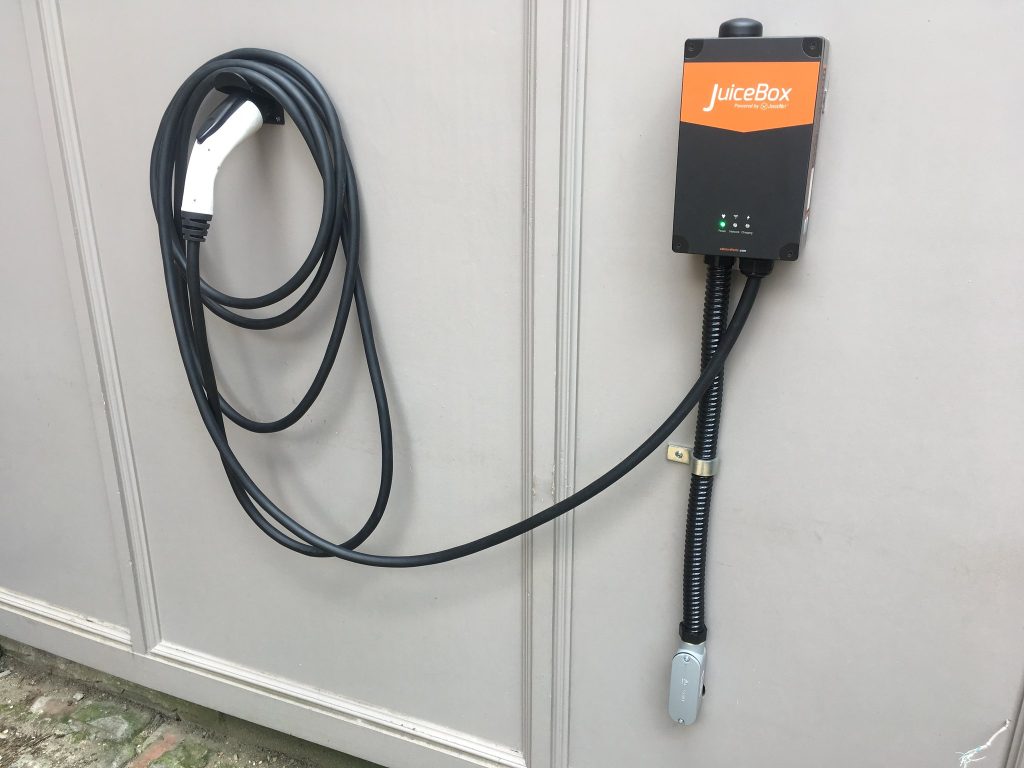Lavallette is one of a small handful of New Jersey towns to operate its own power utility, meaning that for most residents, electricity delivery is provided by the municipal government rather than a commercial provider like JCP&L (which does serve a few streets in town).
Despite having descended into partisan back-and-forth, regulations on electric vehicles are being adopted quickly in New Jersey, including the adoption of a rule by Gov. Phil Murphy in February to require all new cars and light-duty trucks sold to be zero-emission by 2035. The rule is based on a California law and has been adopted by several Democratic governors across the country, aiming to mitigate climate change.
While private utilities have quietly been expressing worry over the idea of millions of vehicles plugging into the wider electrical grid around the same time each night, the smaller municipal utilities could see more acute affects, since power is pre-purchased in bulk. While the municipal utilities can connect to JCP&L’s network, or run diesel generators during emergencies, local stress has been known to cause issues at times. Standard “level one” plugs that utilize standard outlets to charge cars use about as much energy as a home appliance, but more EV owners are choosing “level two” chargers, a high-voltage rapid charger that powers up a vehicle much faster.
“Where a normal house may, at its peak, use 2-4 kilowatts an hour, one of those chargers is between seven and 8 kilowatts an hour,” said Councilman James Borowski, the borough’s liaison to the state’s Public Power Association, consisting of the towns that operate municipal electric utilities in New Jersey. “By putting one of these outlets in one house, it’s akin to putting four or more houses online in that neighborhood.”
A level two charger generally requires a 240 volt outlet as its source with a dedicated circuit that can range from a low of about 40 amps to a high of about 60 amps.
“You generally need a 50 amp breaker to accommodate a Level 2 charger,” said Borowski.
An ordinance would create a system to track level two EV charging stations in town in order to better judge power capacity needs, ensure that the chargers are installed safely, and provide the borough with much of the information a private utility company would require when such a charger is installed. Such electrical work already requires a permit in Lavallette, but Borowski said an ordinance tailored to EV charging stations in homes would be helpful as the vehicles grow in popularity and, eventually, may become required under the law.
“Putting one of those high-capacity chargers in your house would require an electrical permit,” said Borowski. “This is a little redundancy that would incorporate an inspection.”
The council did not vote on an EV-regulating ordinance Monday night at its meeting, but Borowski said he would “really like to move this forward.” The ordinance, which will be reviewed by the borough attorney and elected officials, was promulgated by the Public Power Association as a model policy for each town with its own utility.
The ordinance would also include language addressing “level three” chargers, which are rarely seen in residential use. Such chargers are generally prohibitively expensive and technically complicated to install and operate in a home, leaving their usage primarily reserved for commercial and industrial properties that utilize their large power draw for rapid charging along a highway or fleet charging at an industrial facility.

Advertisement

Seaside Heights & Seaside Park
Seaside Heights School Board Seeking More Participation, Will Change Meeting Times

Police, Fire & Courts
Seaside Park Man, 68, Charged in Fatal Crash With Pedestrian

Ortley Beach & North Beaches
Lottery Ticket Worth $10K Sold at Ortley Beach Acme

Ortley Beach & North Beaches
Abandoned Private Island ‘Mansion’ in Barnegat Bay Poised for Demolition








